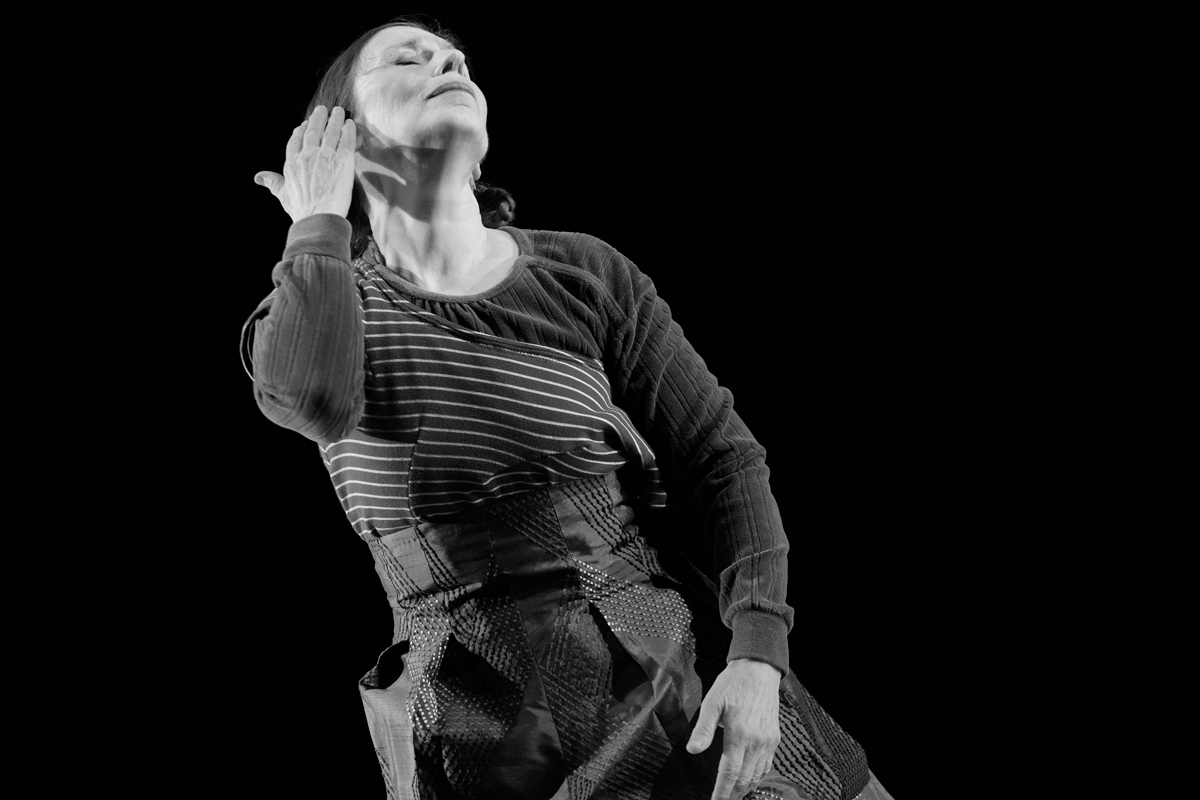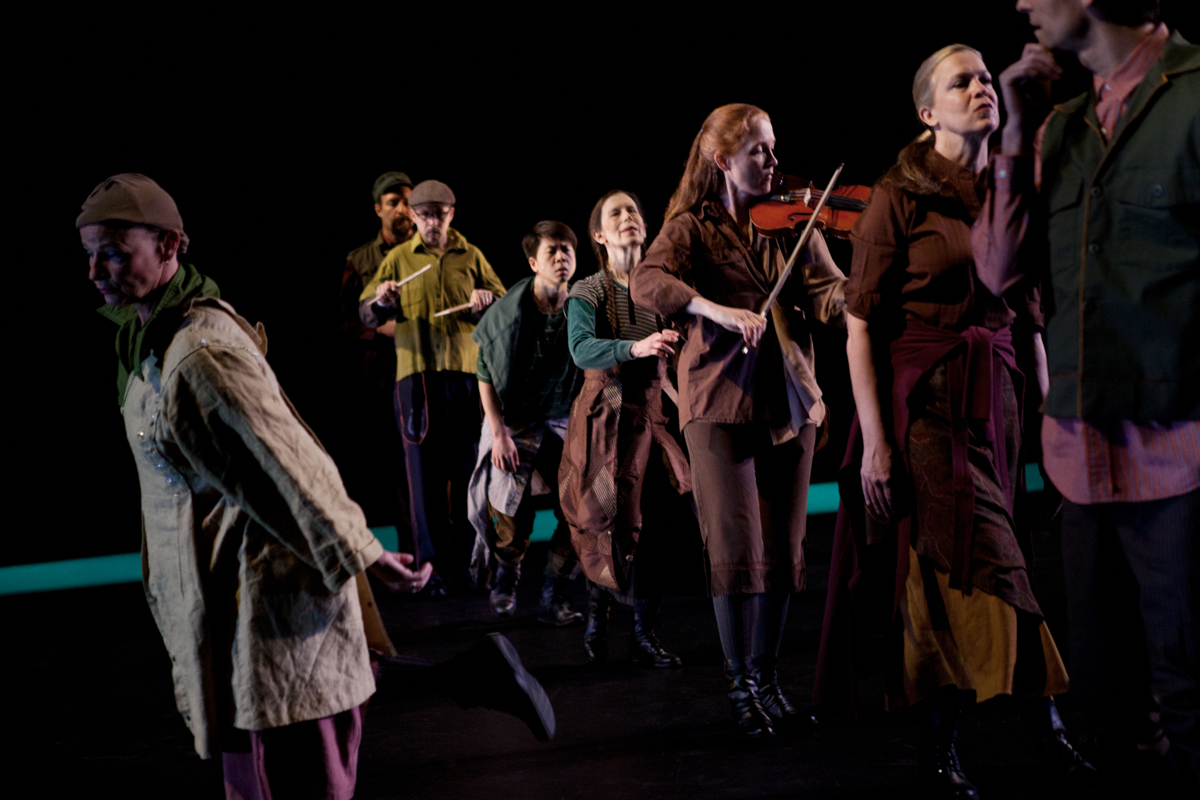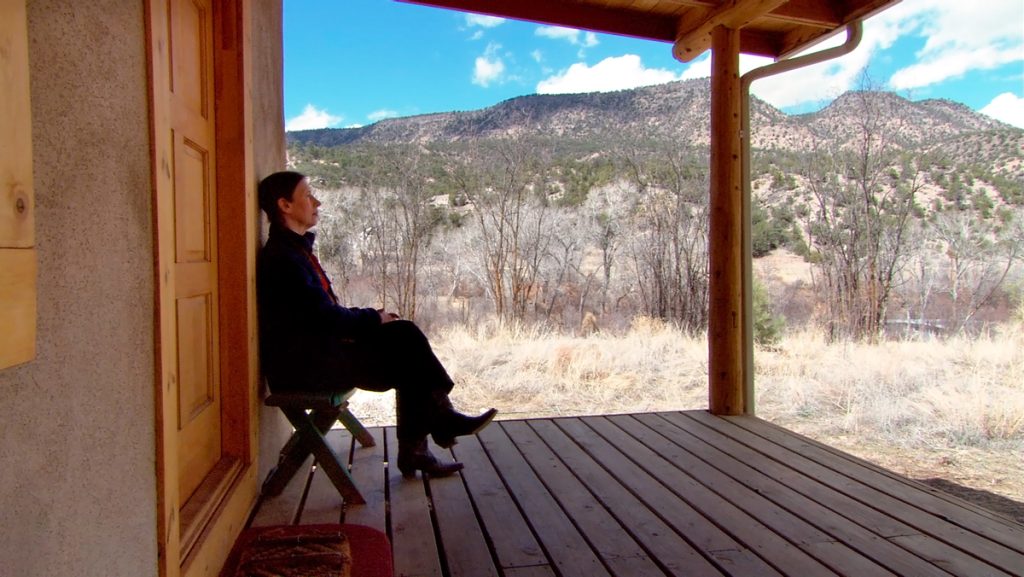Meredith Monk, with her trademark wordless vocals and haunted melodies, has spent decades creating collaborative and contemplative music on themes from mercy to impermanence.
Monk, a longtime Tibetan Buddhist practitioner and member of Shambhala Meditation Center’s New York sangha, released her most recent album, On Behalf of Nature, in November. The collection invites the listener to consider what’s at risk in our current political climate and builds on her earlier work of deep listening while adopting a visceral approach to environmentalism. On Behalf of Nature has already been performed live more than 18 times in the U.S. and internationally.
While Monk has been performing since she was a child, her frequent New York performances began in 1964 after she graduated from Sarah Lawrence College. In 1968, she founded an interdisciplinary ensemble called The House. Her first album, Key, was released in 1977 on Increase Records. She has performed for His Holiness the Dalai Lama and continues to offer workshops and master classes at Buddhist centers.
Monk recently spoke about her new performance piece, the value of thinking deeply about climate change, and the importance of listening to different views in a polarizing time.

When did you know you wanted to make this album?
Over the last 10 years I’ve been really working on pieces that have a contemplative aspect—the contemplation of the subject is part of making the piece. Around 2006 I was finishing my album, Impermanence, and beginning a contemplative piece called Songs of Ascension, which was inspired by the Old Testament tradition of people walking up to a temple and singing certain psalms. Buddhism also has a tradition of worship while walking or moving—such as circumambulating a stupa. I was also inspired by Gary Snyder’s piece, “Writers and the War Against Nature,” in which he writes that artists have to be spokespeople for entities to communicate to the human realm through song and dance, and for “nonhuman entities” as well. That was very inspiring. I feel that I’ve always done this in some form or another.
Did you do a lot of research for this work?
I did a lot of reading about “new biology” [the idea that biology should be better integrated with the other sciences to improve sustainability, the ecosystem, biofuel production, and human health]. I did read some scientific journals, but realized that was not going to be where my inspiration came from. My inspiration really came from practice and from listening a lot. Which I do all the time, anyway, but this was much more conscious listening, and feeling the rhythms of nature.
A lot of the album is focused on climate change. Was this issue the most pressing for you?
Climate change is something that we all have to think about very deeply. Our world is in danger and there’s no way to turn back, and that’s what I’ve been thinking about now in the political climate that we’re living in.
In the dharma we learn that everything is changing, so what I’m saying is relative. But it’s true that once an environment is destroyed, it will come back millions of years from now. On a certain level, what On Behalf of Nature is about is nature going on one way or the other, even if we are very destructive as a species. The last song on the album, called “Spider Web Anthem,” is about the idea that life will continue. In the short run, if you think a pipeline is going destroy an environment, there’s no way to turn back. It’s very important now for all of us to understand ways of working through this.
I’ve been hearing this phrase called “fearless listening.” What I’ve been finding is that in New York City most people feel a certain way about the outcome of the election. But I also have a tiny house in the country in New York State, where many people come from more working class backgrounds and feel very differently. Which is such a strange reversal to me because the Democratic Party was always for the working class. So I’ve been learning to listen fearlessly, to really listen with all my being, and to also realize that even though we may have differing opinions, I love these people. They’re decent, wonderful human beings. We think in different ways because we’re getting different information. How do we find what we have in common?
Last summer I realized that I wasn’t going to change any minds. All of a sudden, I realized every time politics was brought up, the two sides of the room split and there was this polarization. So I feel that it’s so important to find a commonality in any way we can. That’s the only way. We all have to have each other’s backs. Underlying love in your relationships and friendships is much more enduring than the coming and going of political propaganda and information.
How do you define interdependence?
What I do influences everything else, and everything someone else does influences everything else, so there’s not really anything we do that is isolated or without consequence. There’s a connection between all the membranes of existence.
You mentioned Gary Snyder earlier. Who are some other writers and artists and musicians that you think are discussing environmental things very skillfully?
Bill McKibben. He’s a marvelous writer who was very inspiring to me when I was working on On Behalf of Nature. There’s also a wonderful book that’s called Hooked! Buddhist Writings on Greed, Desire, and the Urge to Consume that’s written by different teachers and practitioners.
I was so inspired to read about Buddhist monk activists in both Thailand and Japan. In Thailand, the monks were able to peaceably negotiate with the fishing industry, which was were not allowing the local fishermen to fish properly so they could earn a living. With the help of the monks, the two sides compromised and the local fishermen are back at work. And in a Tokyo neighborhood there was a Zen temple that decided to put solar panels on their roof. This was unheard of for a old and traditional temple. But it generated so much solar energy that they were able to give it back to the neighborhood as well, and the community became closer. People started talking to each other and babysitting for one another.
Another thing I was thinking about while working on the piece was how to make ecological artwork that didn’t create more waste. Usually if you make a performance piece you make or buy costumes that are worn for a few performances. So I started thinking of Claude Levi-Strauss, the anthropologist who created the idea of bricolage— a process of making something from what is already at hand. I called my costume designer, Yoshio Yabara, and said I’d like to make new costumes from what we already had in storage. And we had the cast bring in their own clothing. He cut up the clothes and made these beautiful, sculptural costumes with them. Each person’s costumes contained their own life history.
I thought of the music that way in that way, too, spiraling back and looking at my old notebooks to see if there were phrases, music, or ideas that I could re-look at—not to repurpose, but to revisit and then see if I was ready to make new forms out of them. Spiraling back to make something new—that’s something to think about in a world where there’s so much of everything.

This reminds me of something I read about the artist Yayoi Kusama. She’s actively working with others on projects that will continue after her death. Are you planning to have a direct hand in how your work continues or are you just happy to leave a legacy of inspiration?
I’m lucky enough that I work with a wonderful ensemble of performers, singers, and instrumentalists. My hope is that my work will be passed through the oral tradition so other people can experience the joy of performing, singing, and playing it. But even if I work with the people who have been in my ensemble for many years, there are things that I won’t intuitively be able to pass on. It’s like playing “telephone.” I love the idea that the work will still be able to be performed or even sung, and we do a lot of teaching. Of course, I have my recordings, which is very fortunate in that way, but also it’s been a real struggle to score some of the pieces. About 20 years ago my publisher dragged me in kicking and screaming because some pieces really cannot be notated. What you see is not what you get.
I go to universities a lot to talk to young people and try to pass on some of the ways of thinking about creativity in terms of life itself. Because that’s our lineage—we have an art lineage. I’m always so inspired with these young people that I meet, and feel a sense of longing from them, that they really long to hear words of encouragement to follow their own path and dreams no matter what anybody says. For me, coming into New York when I did was the only possibility. You develop a kind of inner strength, vision, or integrity when you have to struggle. In the end, I think it holds you in good stead, like a soft stubbornness. That’s another way I can pass on what I’ve learned in my life to other people.
What do you hope will come of making this work?
To help people try to think about what they can do as individuals. It’s the same thing as when we talk about practicing. Just through your own practice, you could say, a little light is already starting to shine. It’s like throwing a stone into a pond and watching the water start to ripple out. If you haven’t done that inner work, these things become less meaningful in the long run. It seems like a small thing, but ultimately I think it’s the way that inspiration gets conveyed. I would hope people come to the piece and really go home and think about how they could actually participate in one way or another, if only by being aware of what’s going on. It’s already the beginning.
Thank you for subscribing to Tricycle! As a nonprofit, we depend on readers like you to keep Buddhist teachings and practices widely available.
